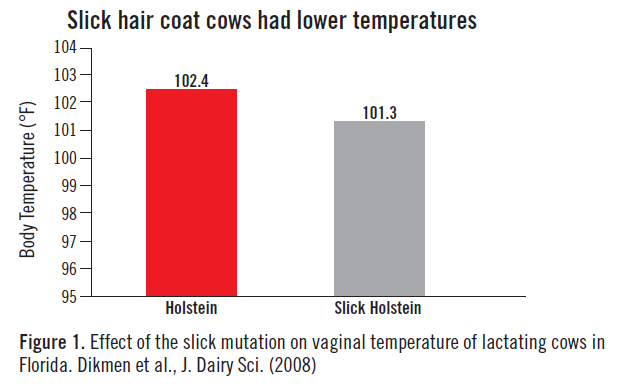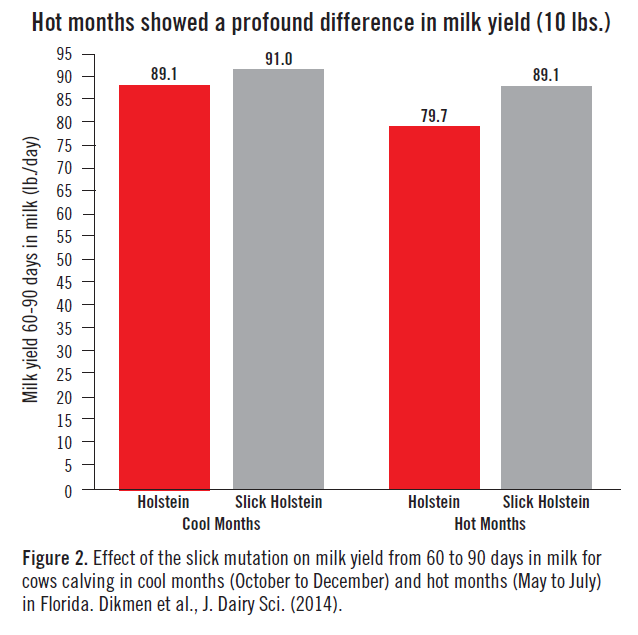In early April, our sire development team unveiled their latest efforts with three sires that are heterozygous for the slick allele. “Slick” cattle were originally found on the Caribbean island of St. Croix from the Senepol breed. The slick hair coat is caused by a mutation in the prolactin receptor gene which gives cattle the ability to better regulate their internal body temperature with an increased capacity for sweating. Much like the Polled allele, the slick allele is dominant. Only one copy of the slick allele must be present in an animal for the phenotype to be expressed.

The added ability to regulate their body temperature naturally, along with existing management efforts (fans, sprinklers, etc.) provides a more complete approach in mitigating the negative effects of heat stress. Slick genetics can help alleviate some
of the common challenges associated with hot, humid conditions like decreased milk yield and feed intake, as well as poor conception.
"The milk production advantages associated with the slick gene during the hot, humid months in the U.S. can be extrapolated to the entire year in tropical countries," says Humberto Rivera, area director of marketing for Latin America. "Selecting for slick
hair coat has the potential to become a tremendous advantage for producers working under tropical conditions worldwide."

Research conducted by the University of Florida and the University of Puerto Rico supports the heat resistant abilities of Holsteins carrying the slick allele. By measuring vaginal temperatures in cows living in a freestall environment at the University
of Florida, researchers found the cows with a slick hair coat averaged 1.1 degree Fahrenheit lower body temperatures at the hottest times of the day (noon to 3 p.m.) compared to the non-slick hair coat cows (Figure 1).
Researchers also studied milk yield in cows at the University of Florida, comparing slick and non-slick hair coat cows calving in cool months (October to December) and hot months (May to July). In Figure 2 you can see that the cool months of the year
provided little production advantage to the slick coat animals, yet the hot months showed a much more profound difference in milk yield.
At Select Sires our mission is to provide slick genetics in the most advanced genetic merit package possible. Our current offering includes three sires that are heterozygous for the slick allele with a range of traits to provide solutions to various genetic needs. One of these sires, 9HO15357 SOLAR-P, also includes the Polled gene for additional desirable genetic characteristics.
To search for additional slick sires that may be added between sire summaries, visit our Bull Search, click on the Filters tab and choose High Interest.
Sire data is based on August 2021 summaries. References: Dikmen et al., J. Dairy Sci. (2014); Dikmen et al., J. Dairy Sci. (2008); Hoards Dairyman, Oct. 25, 2018. ®TPI is a registered trademark of Holstein Association USA.